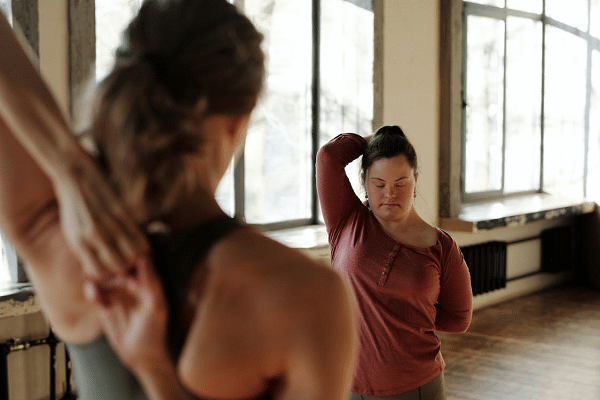Table of Contents
If you are suffering from back pain, you’re not alone. About 31 million Americans suffer from low back pain at some point in their lives. But there are some everyday habits that you can incorporate into your lifestyle that will prevent this problem in the future. Maintaining a healthy weight is one of them. And mindfulness-based stress reduction is another. You can also do these habits as part of your daily routine to eliminate back pain for good.
Exercise

- Daily exercising
If you’ve been suffering from back pain, exercise daily. But what type of exercises are best? Your personal preferences, health conditions, and fitness level will all determine which exercises are best for you. However, whatever you choose, be sure to stick to it for the long term! Here are a few suggestions for your exercise program. First, avoid overdoing it. While exercise may be enjoyable, it’s important not to overdo it, especially if you’re prone to back pain.
- Knee to chest stretch
You can also try the knee-to-chest stretch. This is a great stretch for the lower back. Begin by bending your knees and pulling them toward your chest. Holding this position for five to ten seconds is good for your back and stretches your glutes. It is important to avoid twisting your back during this exercise. The goal is to strengthen your back muscles, not strain them.
- Stay active
Back pain is a result of a combination of factors. A positive attitude and regular activity improve your body’s ability to heal. Don’t let it keep you from getting back to your active self! By staying active, you support your bones and joints, reduce pressure on your joints, and give your back its natural range of motion. You’ll also feel better! If you’re suffering from back pain, don’t ignore it – don’t suffer in silence. Exercise is the most important back pain treatment for your body.
Proper Posture
- Proper posture
Learning proper posture can be an important part of your everyday routine. Good posture helps keep bones and joints in alignment. It prevents abnormal wear and tear on spinal joints and allows muscles to work more efficiently. The right posture can also prevent muscle strain and overuse disorders that can lead to back pain. Choose a good bed frame, there are many different sizes of bed frames in the stores. To learn more about posture and how to prevent it, check out the Mayo Clinic’s free health information online. You can also check out the website of a local chiropractor.
- Avoid injuries
Proper posture is more than just a fashion statement. It is an essential aspect of overall health and well-being. Learning to maintain proper posture can help you avoid painful injuries and back pain in the long run. There are two types of posture: static and dynamic. The former is important to keep your body in balance and free of strain. Try to avoid hunching forward while you’re standing or carrying heavy items on one side of your body.
- Prevents pain
While many of us think that posture is just about how we stand or sit, the reality is that we are not all born with the perfect body shape. Good posture requires us to train our bodies to keep our bodies in the right position, which prevents back pain. It also keeps our joints and ligaments in good shape, preventing the onset of arthritis and reducing fatigue. By practicing good posture, we can eliminate back pain.
Drinking-Water

- Stay hydrated
Keeping hydrated is very important for the health of your back. When we’re dehydrated, it shocks our muscles, organs, and bones, so drinking water daily is crucial for optimal health. Our spine contains small discs that contain up to 75% water. When these discs are dehydrated, they become herniated or damaged, which can result in back pain. However, keeping hydrated helps prevent back pain and keeps the discs healthy.
- Aids indigestion
Water also helps our bodies to digest food and maintain a healthy pH balance. Dehydration can lead to uncomfortable stomach conditions like gas, bloating, and heartburn. Water also helps flush out harmful bacteria from our urinary tract, which can lead to bladder infections. Drinking enough water can also prevent urinary tract infections and lowers our body’s temperature. Water also helps us to keep cool in hot weather. When we are dehydrated, our bodies produce sweat to cool down and prevent heatstroke.
Amidst all these another important feature that actually reduces the pain in your back is getting a comfortable sleep. You can also try acupressure to sleep fast in order to get a healthy and painless life.
Mindfulness-Based Stress Reduction
- Overall health
Practising mindfulness can help you manage your pain by lowering distress and improving your overall health. In particular, it can reduce the intensity of your pain by reducing your automatic reactions to pain. The practice involves learning how to recognize the sensations you experience and the reactions you give them and then changing your responses to reduce distress and pain intensity. Practising mindfulness also reduces worry about the future and focuses more energy on enjoying life.
- Decrease pain levels
Researchers have shown that regular mindfulness practice significantly decreases pain levels and may even eliminate or reduce the use of pain medication. The researchers looked at brain images of participants and found that mindfulness practice reduced activation in the pain-management areas of the brain. This has led some participants to completely forgo pain medications. However, more studies are necessary to understand if the technique is effective for everyone. But for now, it’s worth mentioning that it produces results faster than many conventional pain medications.
Alternating Physically Demanding Tasks
To prevent back pain, try to alternate between sitting at a desk all day and lifting items. When you lift heavy objects, your leg muscles and core muscles should be used, not just your back. If you are unable to lift heavy objects, hold them close to you. Take frequent breaks and alternate between sitting and physical activities during the day. Alternate your daily routine and try to avoid sitting for more than 2 hours a day.
Summary
A number of MBSR groups are now available at universities, clinics, and hospitals. These organisations provide educational programs on how to practice mindfulness on a daily basis. The program consists of daily meditation and yoga sessions. The program stresses individual practice. The Centre for Mindfulness stresses medical heterogeneity and emphasises individual practice. Therefore, people with different medical conditions can participate in the same program and enjoy a better quality of life.